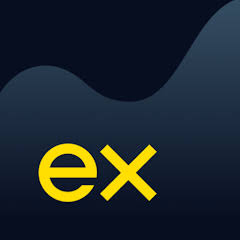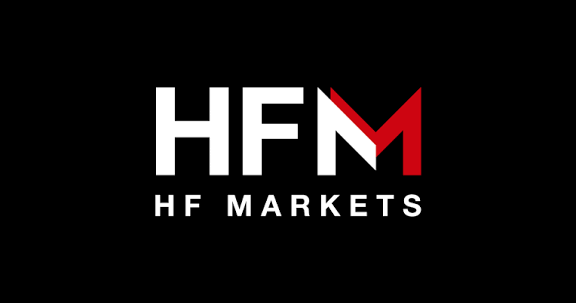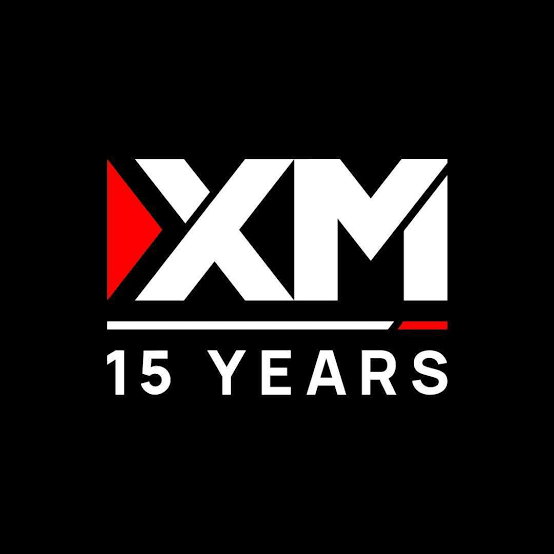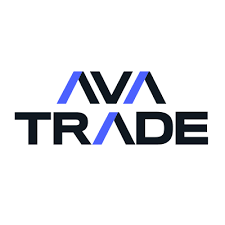Best Day Trading Brokers – An Educational Framework
Day traders operate in the busiest sessions, so reliability and cost control matter. Aim for low, consistent all‑in costs—spread, any commission, and financing if a position crosses sessions—together with fast execution that holds up when volatility rises. Fluency with platform tools such as hotkeys, OCO and stop‑limit orders, and stable charting reduces avoidable errors. Pair this with strict risk controls: define risk per trade, place hard stops, and enforce a daily loss limit so normal losing sequences remain survivable while you learn on a demo account.
Recommended Brokers 2025
Educational access and demo-first practice. No investment advice.
Table of Contents
- Recommended Brokers
- Introduction: What Day Traders Actually Need
- Step-by-Step Due Diligence
- Understanding Different Broker Types
- Comprehensive Cost Analysis
- Essential Platform Features
- Risk Management Tools
- Tips & Best Practices
- Worked Examples
- Top Day Trading Platforms 2025
- What Makes These Brokers The Best
- Top Day Trading Platforms Comparison
- Relevant Brokers (Logos + Educational Notes)
- FAQs
- References
Introduction: What Day Traders Actually Need
Day traders operate in the busiest sessions, so reliability and cost control matter. Aim for low, consistent all‑in costs—spread, any commission, and financing if a position crosses sessions—together with fast execution that holds up when volatility rises. Fluency with platform tools such as hotkeys, OCO and stop‑limit orders, and stable charting reduces avoidable errors. Pair this with strict risk controls: define risk per trade, place hard stops, and enforce a daily loss limit so normal losing sequences remain survivable while you learn on a demo account.
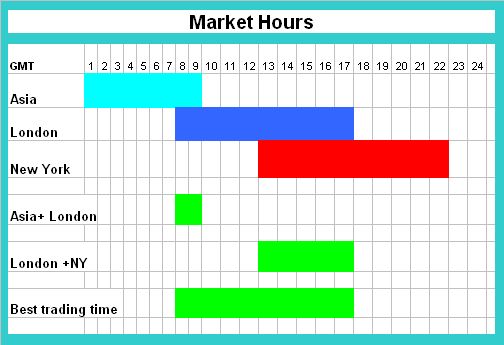
Key Requirements for Day Trading Brokers
- Fast Execution: Minimal slippage and requotes during volatile periods
- Low Transaction Costs: Competitive spreads and commissions that don't eat into profits
- Reliable Platform: Stable trading software with minimal downtime
- Advanced Charting: Comprehensive technical analysis tools
- Risk Management Tools: Guaranteed stops, negative balance protection
- Quality Customer Support: Responsive assistance during market hours
- Educational Resources: Materials to improve trading skills
Step-by-Step Due Diligence
Create a written checklist and run it the same way every time. Verify regulation and any client protections in your region, then define your typical trade—instrument, size, and holding time—so you evaluate true costs on relevant terms. Build a latency and slippage journal from demo fills across sessions and stress‑test during events to observe spreads, partial fills, and re‑quotes. Validate the exact charting features, alerts, and order tickets you will use live. When transitioning to live, keep size tiny and continue journaling so your refinements are driven by real data.
Due Diligence Checklist
| Category | Checkpoints | Notes |
|---|---|---|
| Regulation & Security |
|
Verify with official regulatory websites |
| Trading Costs |
|
Test during different market sessions |
| Platform & Tools |
|
Test during high volatility periods |
| Execution Quality |
|
Keep a detailed execution journal |
Understanding Different Broker Types
Day traders should understand the fundamental differences between broker types as this affects execution quality, potential conflicts of interest, and overall trading costs.
Market Maker vs. ECN/STP Brokers
| Feature | Market Maker | ECN/STP |
|---|---|---|
| Execution Model | Takes opposite side of client trades | Routes orders to liquidity providers |
| Pricing | Fixed or variable spreads, no commissions | Raw spreads + commissions |
| Conflict of Interest | Potential conflict as broker profits from client losses | Broker earns commission regardless of trade outcome |
| Best For | Beginners, small accounts | Professional traders, large volumes |
Broker Account Types
Most brokers offer multiple account types tailored to different trading styles and experience levels:
| Account Type | Minimum Deposit | Spreads | Commission |
|---|---|---|---|
| Standard | $100 - $500 | Wider, no commission | None |
| ECN/Raw Spread | $500 - $2,000 | Tighter, raw spreads | $3 - $7 per lot |
| Professional | $10,000+ | Institutional pricing | Negotiable |
| Islamic | Varies | Similar to standard | No swap fees |
Comprehensive Cost Analysis
Understanding the true cost of trading is essential for day traders, as small differences in costs can significantly impact profitability over time.
Components of Trading Costs
- Spreads: Difference between bid and ask prices
- Commissions: Fixed fees per trade or per lot
- Overnight Financing: Costs for holding positions overnight
- Inactivity Fees: Charges for dormant accounts
- Currency Conversion Fees: Costs when depositing/withdrawing in different currencies
- Slippage: Difference between expected and actual execution price
Cost Comparison: Major Currency Pairs
| Broker | EUR/USD Spread | Commission (per lot) | Total Cost per Round Turn |
|---|---|---|---|
| IC Markets | 0.1 pips | $7.00 | $8.00 |
| Pepperstone | 0.1 pips | $7.00 | $8.00 |
| XM | 0.6 pips | $0.00 | $6.00 |
| HFM | 0.5 pips | $0.00 | $5.00 |
| Exness | 0.3 pips | $0.00 | $3.00 |
Impact of Trading Costs on Profitability
Let's examine how different cost structures affect a day trader with varying win rates and risk-reward ratios:
| Scenario | Win Rate | Risk:Reward | Low Costs ($4 RT) | High Costs ($12 RT) |
|---|---|---|---|---|
| Aggressive | 40% | 1:2 | +8% per 100 trades | -16% per 100 trades |
| Balanced | 50% | 1:1.5 | +17% per 100 trades | +1% per 100 trades |
| Conservative | 60% | 1:1 | +16% per 100 trades | +4% per 100 trades |
Note: Calculations assume $100 risk per trade, 100 trades, RT = Round Turn cost
Essential Platform Features for Day Trading
The trading platform is your primary tool as a day trader. Understanding and utilizing its features effectively can significantly impact your trading performance.
Must-Have Platform Features
Order Management
- One-Click Trading
- Multiple Order Types (Limit, Stop, OCO)
- Trailing Stops
- Partial Close Functionality
Charting & Analysis
- Multiple Timeframe Charts
- Technical Indicators (50+)
- Drawing Tools
- Customizable Templates
Automation
- Expert Advisors (MT4/MT5)
- Custom Indicators
- Scripts
- API Access
Risk Management
- Margin Calculator
- Risk/Reward Ratio Display
- Account Protection Tools
- Trade Journal Integration
Popular Trading Platforms Comparison
| Platform | User Level | Customization | Automation | Mobile Experience |
|---|---|---|---|---|
| MetaTrader 4 | Beginner to Advanced | High | Excellent | Good |
| MetaTrader 5 | Intermediate to Advanced | Very High | Excellent | Good |
| cTrader | Intermediate to Advanced | High | Good | Excellent |
| TradingView | All Levels | Very High | Limited | Excellent |
| NinjaTrader | Advanced | Very High | Excellent | Basic |
Risk Management Tools and Techniques
Effective risk management is the foundation of sustainable day trading. Brokers offer various tools to help manage risk, but understanding how to use them is crucial.
Essential Risk Management Tools
Broker-Provided Tools
- Stop Loss Orders: Automatic position closure at predetermined price
- Take Profit Orders: Automatic profit-taking at target price
- Negative Balance Protection: Prevents account going below zero
- Margin Calls: Alerts when margin level is critical
- Guaranteed Stops: Paid feature ensuring stop loss execution
Trader-Implemented Strategies
- Position Sizing: Risking only 1-2% of capital per trade
- Daily Loss Limits: Maximum acceptable loss per day
- Correlation Analysis: Avoiding overexposure to correlated assets
- Volatility Adjustments: Reducing position size during high volatility
- Time-Based Exits: Closing all positions by end of day
Risk Management Comparison by Broker
| Broker | Negative Balance Protection | Guaranteed Stops | Maximum Leverage | Margin Call Level |
|---|---|---|---|---|
| IC Markets | Yes | No | 1:500 | 100% |
| Pepperstone | Yes | Yes | 1:500 | 80% |
| XM | Yes | No | 1:1000 | 50% |
| HFM | Yes | No | 1:2000 | 50% |
| Exness | Yes | No | Unlimited | 60% |
Tips & Best Practices
Keep risk per trade small—often 0.25%–0.75%—so variance is survivable. If your approach is sensitive to gaps, reduce or avoid exposure during extreme events. Keep workflows simple and repeatable with a pre‑trade checklist. Backtest for structure, forward‑test on demo for execution and slippage, then go live with minimal size.
Developing a Day Trading Routine
Pre-Market (1-2 hours before open)
- Review economic calendar
- Analyze overnight price action
- Identify key support/resistance levels
- Set up watchlists
- Review trading plan
During Trading Session
- Follow pre-defined entry rules
- Monitor open positions
- Adjust stops if necessary
- Take regular breaks
- Stay hydrated and focused
Post-Market (After close)
- Review all trades
- Update trading journal
- Analyze mistakes and successes
- Plan for next session
- Disconnect from markets
Common Day Trading Mistakes to Avoid
| Mistake | Impact | Solution |
|---|---|---|
| Overtrading | Increased costs, emotional exhaustion | Set maximum daily trade limit |
| Revenge Trading | Compounding losses, poor decision-making | Stop trading after hitting daily loss limit |
| Ignoring Risk Management | Catastrophic losses, account blow-up | Always use stop losses, risk max 2% per trade |
| Chasing Price | Poor entry points, increased slippage | Wait for pullbacks to key levels |
| Trading Without Plan | Inconsistent results, emotional trading | Develop and follow a detailed trading plan |
Worked Examples
If your expectancy per trade is 1.2 pips with a 55% win rate on EURUSD, all-in costs must be materially below that edge. Test several brokers on demo and compute net expectancy after spread/commission and average slippage.
Example 1: Cost Analysis for Different Trading Styles
| Trading Style | Trades Per Day | Average Hold Time | Broker Type Recommended | Monthly Cost Estimate* |
|---|---|---|---|---|
| Scalping | 20-50 | Seconds to minutes | ECN/Raw Spread | $800 - $2,000 |
| Day Trading | 5-15 | Minutes to hours | ECN or Standard | $300 - $900 |
| Swing Trading | 1-5 | Hours to days | Standard | $50 - $250 |
*Based on 20 trading days per month, standard lot sizes
Example 2: Broker Selection Based on Account Size
Small Account ($500 - $2,000)
- Focus on brokers with micro/mini lots
- Prioritize no commission accounts
- Look for low minimum deposit
- Consider cent accounts for practice
- Examples: XM, Exness, HFM
Medium Account ($2,000 - $10,000)
- Balance between costs and features
- Consider ECN accounts with commissions
- Look for better execution quality
- Access to more advanced platforms
- Examples: IC Markets, Pepperstone
Large Account ($10,000+)
- Prioritize execution quality above all
- Negotiate custom pricing
- Access to premium services
- Multiple account options
- Examples: All major brokers with premium services
Top Day Trading Platforms 2025 – Independent Overview
The best brokers for day trading offer competitive fees, excellent charting tools, reliable execution, access to global markets, margin trading, have accessible minimum deposits, and are trusted. Dig into our choice of the top day trading platforms that meet these criteria.
Top 6 Platforms For Day Trading 2025
After performing hands-on tests of 227 brokers as of October 2025, these are the 6 best platforms for day trading (ordered by our site preference):
| Rank | Broker | Overall Score | Best For |
|---|---|---|---|
| 1 | Deriv | 9.4/10 | Innovative Products & Demo Practice |
| 2 | HFM | 9.2/10 | Multiple Account Types |
| 3 | Exness | 9.1/10 | Low Spreads & High Leverage |
| 4 | AvaTrade | 9.0/10 | Beginner-Friendly Platforms |
| 5 | XM | 8.9/10 | Small Accounts & Education |
| 6 | IC Markets | 8.8/10 | Raw Spreads & Fast Execution |
What Makes These Brokers The Best For Day Trading?
Here’s a rundown of why these day trading platforms topped our rankings:
Deriv – Innovative broker since 1999 with CFDs, multipliers, and accumulators, plus simple platforms (DTrader, Deriv MT5). Great for demo drills and short‑term trades. Learn product specs and volatility before going live.
HFM – Multiple account types and steady execution on MetaTrader. Tight spreads in liquid sessions. Match account type to your average trade size and journal slippage by session.
Exness – Deep liquidity, many base currencies, and competitive pricing. Practical tools like calculators help planning. Test spreads at your active hours and use a hard daily loss limit.
AvaTrade – Broad platform choice (WebTrader, MT4/MT5, AvaOptions) and strong education. Beginner‑friendly for demo practice, then live with small size and tight risk rules.
XM – Well‑regulated broker with 1000+ instruments and solid MetaTrader support. Compare account types and verify execution as you transition from demo to live.
AvaTrade - Established in 2006, AvaTrade is a leading forex and CFD broker trusted by over 400,000 traders. Operating under regulation in 9 jurisdictions, AvaTrade processes an impressive 2+ million trades each month. Through like MT4, MT5, and its proprietary WebTrader, the broker provides a growing selection of 1,250+ instruments. Whether it's CFDs, AvaOptions, or the more recent AvaFutures, short-term traders at all levels will find opportunities. With terrific education and 24/5 multilingual customer support, AvaTrade delivers the complete trading experience.
IC Markets - IC Markets is a globally recognized forex and CFD broker known for its excellent pricing, comprehensive range of trading instruments, and premium trading technology. Founded in 2007 and headquartered in Australia, the brokerage is regulated by the ASIC, CySEC and FSA, and has attracted more than 180,000 clients from over 200 countries.
RoboForex - RoboForex is an online broker, established in 2009 and registered with the IFSC in Belize. Traders can choose from five accounts (Prime, ECN, R StocksTrader, ProCent, Pro) catering to different needs with trades from 0.01 lots and spreads from 0 pips. RoboForex has also enhanced its offering over the years, adding CFD instruments and launching its stock trading platform, plus the CopyFX system.
Exness - Established in 2008, Exness has maintained its position as a highly respected broker, standing out with its industry-leading range of 40+ account currencies, growing selection of CFD instruments, and intuitive web platform complete with useful extras like currency convertors and trading calculators.
Deriv - Established in 1999, Deriv is an innovative broker now serving over 2.5 million global clients. The firm offers CFDs, multipliers and more recently accumulators, alongside its proprietary derived products which can't be found elsewhere, providing flexible short-term trading opportunities.
Top Day Trading Platforms Comparison
Find the best day trading platform for you with our side-by-side comparison of the areas vital to active traders:
| Broker | Fast Execution | Margin Trading | ECN Trading | Minimum Deposit | Mobile App Rating |
|---|---|---|---|---|---|
| Deriv | ✔ | ✔ | ✘ | $5 | 4.5/5 |
| HFM | ✔ | ✔ | ✘ | $0 | 4.3/5 |
| Exness | ✔ | ✔ | ✔ | $1 | 4.6/5 |
| AvaTrade | ✔ | ✔ | ✘ | $100 | 4.4/5 |
| XM | ✔ | ✔ | ✘ | $5 | 4.2/5 |
| IC Markets | ✔ | ✔ | ✔ | $200 | 4.3/5 |
| RoboForex | ✘ | ✔ | ✔ | $10 | 4.1/5 |
Relevant Brokers (Logos + Educational Notes)
IC Markets
Compare raw vs standard pricing accounting for commissions and typical slippage.
Learn moreAvaTrade
Evaluate platform stability during volatile windows; start on demo to learn flows.
XM
Compare accounts and test order handling; keep risk small in live transition.
HFM
Match account type to your trade size; journal slippage and manage risk.
Pepperstone
Execution and spreads are central for day trading. Journal slippage by session.
Learn moreFAQs
Do the cheapest spreads guarantee better results?
Not necessarily. Execution (speed, slippage) and platform reliability are equally important. Measure all-in costs across your own workflow.
What's a sensible way to start live?
After extensive demo tracking, go live with tiny size, keep a strict daily loss limit, and scale only after stable performance.
How much capital do I need to start day trading?
While some brokers allow accounts with as little as $10, a more realistic starting point is $500-$2,000 to properly implement risk management strategies. Remember that undercapitalization is a common reason for failure.
Should I use a market maker or ECN broker?
Market makers often have no commissions and are better for beginners with small accounts. ECN brokers typically offer tighter spreads with commissions and are better for high-volume traders who need the best possible execution.
How important is regulation for day trading?
Extremely important. Regulated brokers must adhere to strict financial standards, provide segregation of client funds, and offer investor protection schemes. Always verify a broker's regulatory status before depositing funds.
What's the best platform for beginner day traders?
MetaTrader 4 remains the most popular choice for beginners due to its simplicity, extensive educational resources, and large community. Many brokers also offer proprietary platforms with simplified interfaces specifically designed for newcomers.
How do I evaluate a broker's execution quality?
Test on a demo account during different market conditions. Pay attention to: 1) Slippage on market orders, 2) Requote frequency, 3) Spread stability during news events, 4) Order execution speed. Keep a journal of your observations.
References & Style Inspiration
We took inspiration from the clear, educational layout used by daytrading.com. All writing on this page is original and simplified for education only.

